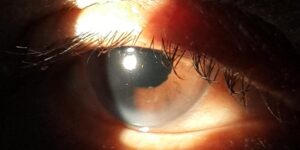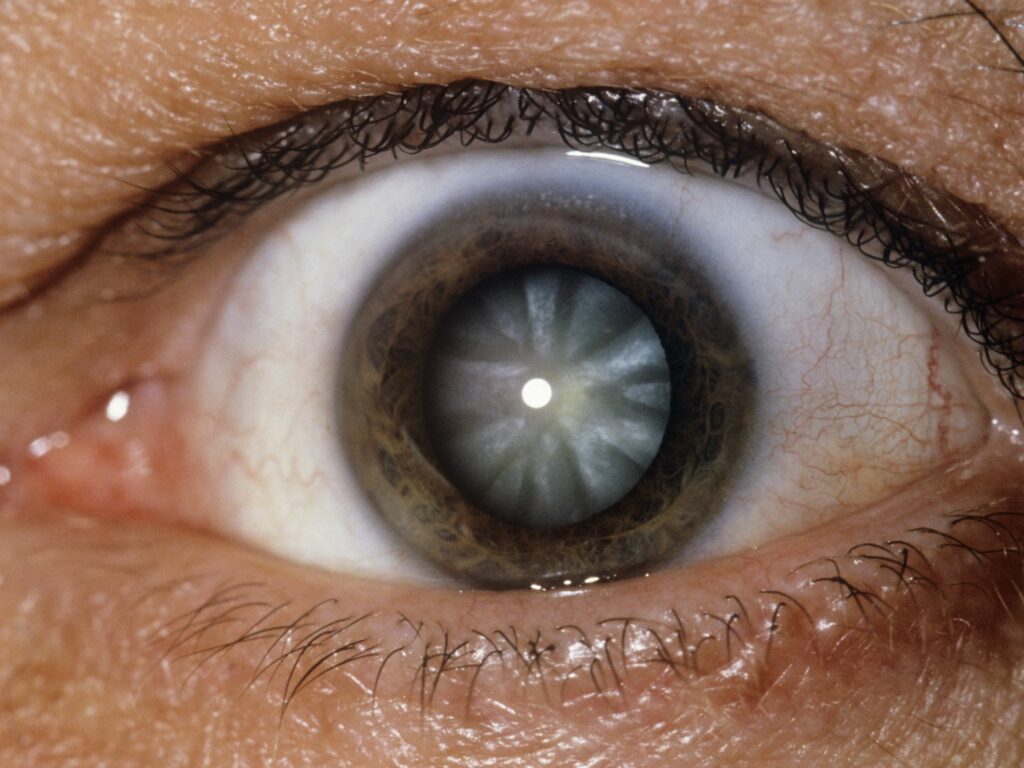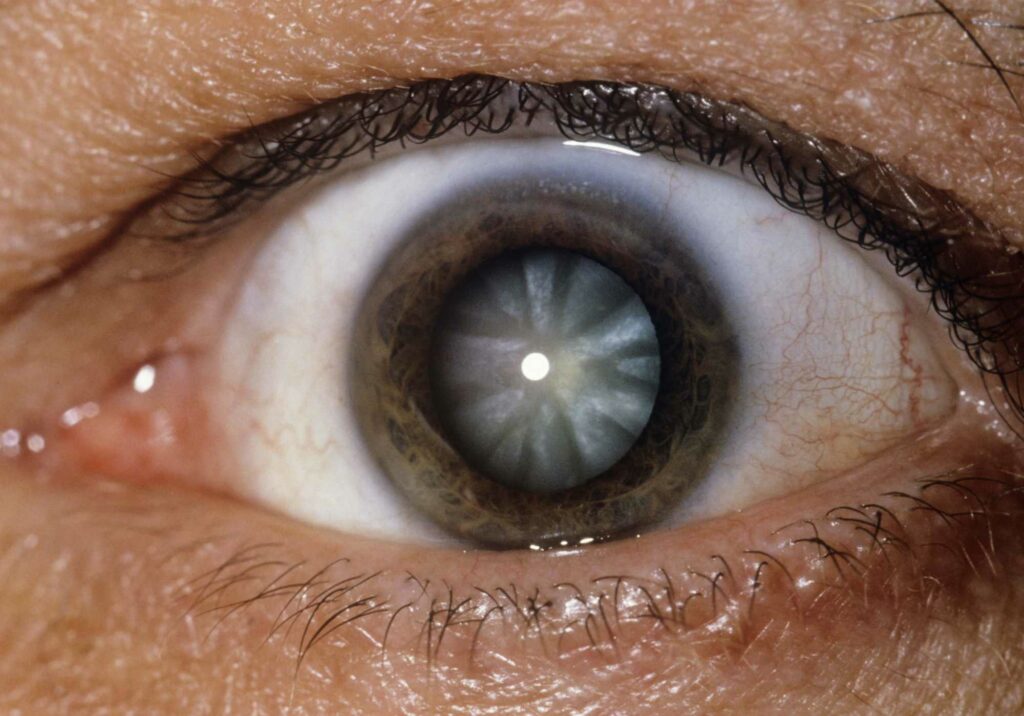A cataract is a clouding of the lens in the eye that affects vision. It is the leading cause of blindness worldwide. There are three types of cataracts: nuclear, cortical, and posterior subcapsular. In this blog post, we will discuss this type of cataract in detail that is PSCC cataracts We will also talk about the symptoms and treatment options for this type of PSCC cataract.
What Is PSCC Cataract?

PSCC Cataract is an eye condition that results in the clouding of the eye’s lens. This can lead to decreased vision and, in some cases, complete blindness. PSCC Cataract is most common in older adults, but they can occur at any age. There are several different types of PSCC cataracts, each with its own set of symptoms and treatment options.
PSCC Cataract is caused by the accumulation of proteins in the eye’s lens. These proteins cause the lens to become cloudy and opaque. Over time, this cloudiness can progress and result in decreased vision or even blindness.
There are several different types of PSCC cataracts, each with its own set of symptoms and treatment options. The most common type is age-related PSCC cataract, which typically affects older adults. Other types include congenital PSCC cataract, which is present at birth; traumatic PSCC cataract, which is caused by an injury to the eye; and radiation-induced PSCC cataract, which can be caused by exposure to certain types of radiation.
Symptoms of PSCC Cataract

The symptoms of PSCC Cataracts vary depending on the type of cataract present. However, some common symptoms include:
Cloudy or Blurry Vision
One of the most common symptoms of PSCC cataracts is cloudy or blurry vision. This can make it difficult to see both up close and far away. Sometimes there may be many tiny spots in your vision.
Glare and Halos Around Lights
Another common symptom of PSCC cataracts is the presence of glare and halos around lights. This can make driving at night or in other low-light situations difficult.
Eye Pain or Discomfort
Some people with PSCC cataracts may experience eye pain or discomfort. This is usually due to the cloudiness of the lens causing light to scatter in the eye. In some cases, this pain may be severe enough to require medication. Discomfort may also be present when reading or performing other close-up tasks.
Defective Near Vision
One of the most disabling symptoms of PSCC cataracts is defective near vision, also known as presbyopia. This makes it difficult to read or perform other close-up tasks. Bifocals or reading glasses may be necessary to correct this problem.
Fading or Yellowing of Colors
Fading or yellowing of colors is another symptom of PSCC cataracts. This can make it difficult to distinguish between different colors, especially in low-light situations. It also makes it more difficult to see the contrast.
Seeing “halos” around lights
Another common symptom of PSCC cataracts is the presence of halos around lights. This can make driving at night or in other low-light situations difficult.
Risks of PSCC Cataract
There are many risk factors for developing PSCC cataracts. Some of these include:
Age
One of the most significant risk factors for developing PS cataracts is age. The older you are, the greater your chances of developing the condition. Around 50% of people over the age of 65 have some degree of PS cataract.
Smoking
Smoking is another major risk factor for developing PSCC cataracts. Studies have shown that smokers are more than twice as likely to develop the condition as non-smokers.
Diabetes
Diabetes is also a significant risk factor for developing PSCC cataracts. People with diabetes are four times more likely to develop the condition than those without diabetes.
Exposure to Ultraviolet (UV) Light
Exposure to ultraviolet (UV) light is another possible risk factor for developing PSCC cataracts. UV light can damage the proteins in the eye’s lens, leading to their accumulation and cloudiness.
Family History
If you have a family member with PSCC cataracts, you may be at an increased risk of developing them yourself. These genetics also seem to play a role in the development of age-related PSCC cataracts.
Eye Injury Surgery
An injury to the eye or previous eye surgery can increase your risk of developing PSCC cataracts. This is because these procedures can damage the eye’s lens and lead to the accumulation of proteins.
Radiation of the Eye
Exposure to certain types of radiation, such as X-rays, can also damage the proteins in the eye’s lens and lead to their accumulation. This can eventually cause PSCC cataracts.
How Does PSCC Cataract Affect Lifes?
There can be many different things that can affect a person’s life, but one of the most important things is their vision. When a person has cataracts, it can cause many problems with their vision. One of the most common problems is that they will have difficulty seeing at night. This can make it hard to drive or do other activities that require good vision. Cataracts can also make it difficult to read or see fine details.
PSCC cataract is a type of cataract that develops slowly and usually affects both eyes equally. It occurs when the proteins in the eye’s lens change and clump together. These clumps block or scatter light as it passes through the lens, making objects appear blurry. PSCC cataract typically affects people over the age of 60.
It also affects the eye’s ability to change focus. This can make it difficult to read or do other activities that require good vision. PSCC cataract is the most common type of cataract in the world. It also impacts the daily lives of millions of people.
How To Treat PSCC Cataracts?

Treating PSCC cataracts can be difficult, as there is no known cure. However, there are treatments available that can help to improve your vision and quality of life. These include:
Surgery: This is the most common treatment for PSCC cataracts. During surgery, the cloudy lens will be removed and replaced with a clear artificial one. This can help to improve your vision significantly. The procedure of surgery is also generally very safe.
Medications: Several different medications can be used to treat PSCC cataracts. These include corticosteroids, which can help to reduce inflammation and pain; and antiglaucoma drugs, which can help to improve drainage from the eye and reduce pressure.
If you have PSCC cataracts, it is important to talk to your doctor about the best treatment options for you. With the right treatment, you can improve your vision and quality of life.
Can You Prevent PSCC Cataracts?
Preventing cataracts altogether may not be possible, but you can reduce your risk by doing the following:
Wear Sunglasses or Contact Lenses With UV Protection
One of the most common risk factors for developing cataracts is exposure to ultraviolet (UV) radiation from the sun. You can protect your eyes from UV rays by wearing sunglasses that block both UVA and UVB radiation, or by wearing contact lenses with built-in UV protection.
Eat a Healthy Diet
Eating a diet that’s rich in antioxidants and vitamins A and C may help reduce your risk of developing cataracts.
Good sources of these nutrients include dark leafy greens, citrus fruits, tomatoes, salmon, nuts, and eggs.
Don’t Smoke
Smokers are two to three times more likely to develop cataracts than nonsmokers.
If you smoke, quitting is one of the best things you can do for your overall health — and your eye health.
Exercise Regularly
Regular exercise has been linked with a lower risk of developing cataracts. So get moving to help keep your eyes healthy. These exercises also help:
- Strengthen your eye muscles
- Improve blood circulation
- Reduce stress and tension
Get Regular Eye Exams
If you have a family history of cataracts or are over the age of 60, make sure to get regular eye exams. These can help catch cataracts early on and prevent them from getting worse.
These are just a few lifestyle changes that may help reduce your risk of cataracts. For more information, talk to your doctor or an eye care specialist.
Conclusion
PSCC Cataracts are a very serious condition that can lead to vision loss. If you think you may have a cataract, it is important to see an eye doctor right away. Early diagnosis and treatment are the keys to preserving your vision.
PSCC Cataracts are a very serious condition that can lead to vision loss. If you think you may have a cataract, it is important to see an eye doctor right away for proper diagnosis and treatment. Timely intervention is crucial to preserve your vision. If you have been diagnosed with PSCC Cataracts, there are treatments available that can improve your vision.
Cataract surgery is a safe and painless procedure. At EyeMantra we have a team of experienced eye surgeons, who will be happy to answer your questions on cataract surgery, cataract surgery cost, and cataract lens cost for different cataract surgery types- Phacoemulsification, MICS & Femto Laser Cataract. Call us at +91-9711116605 or email at [email protected] for inquiries.


